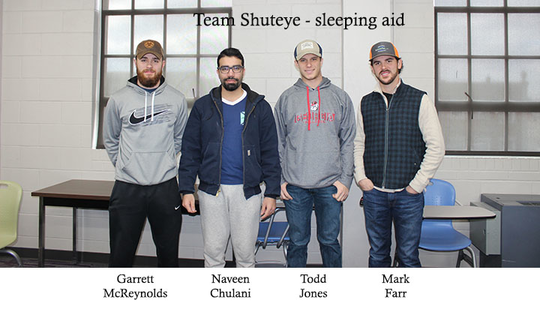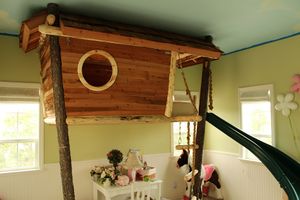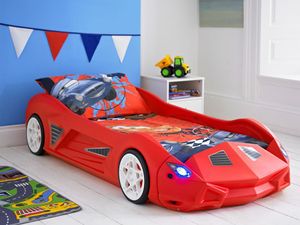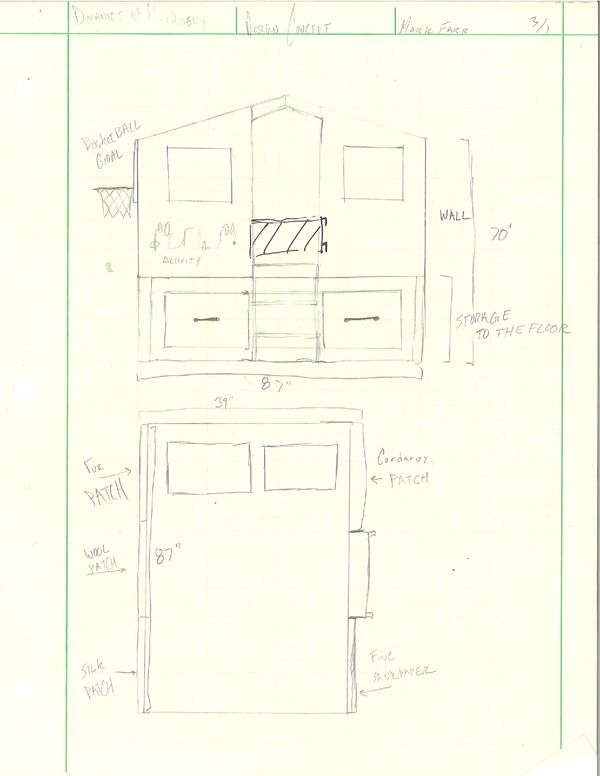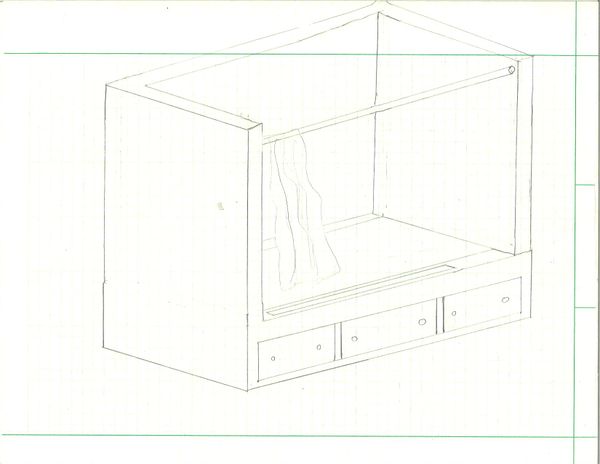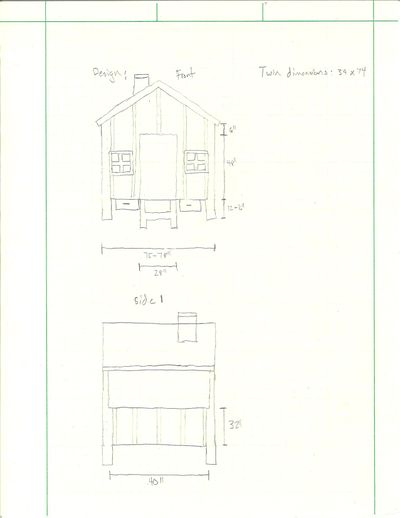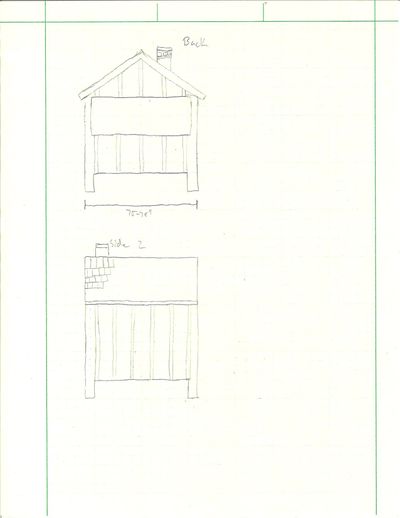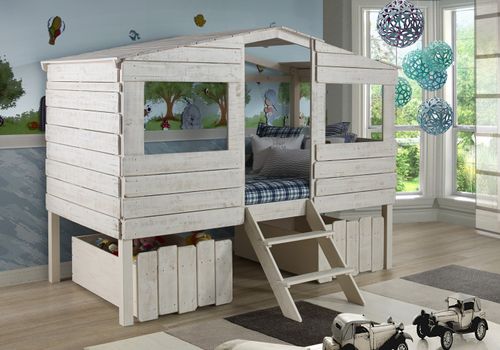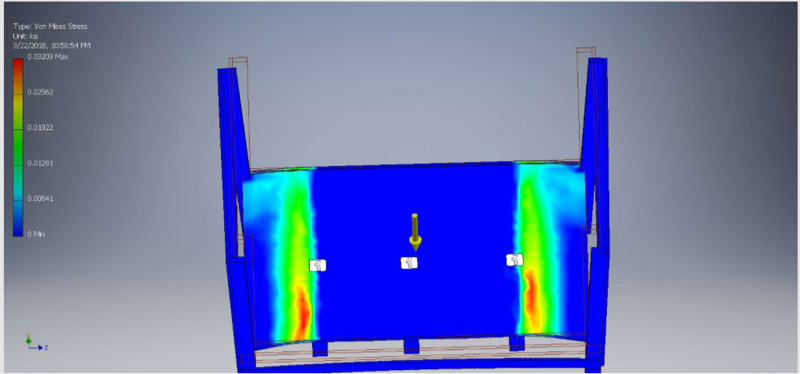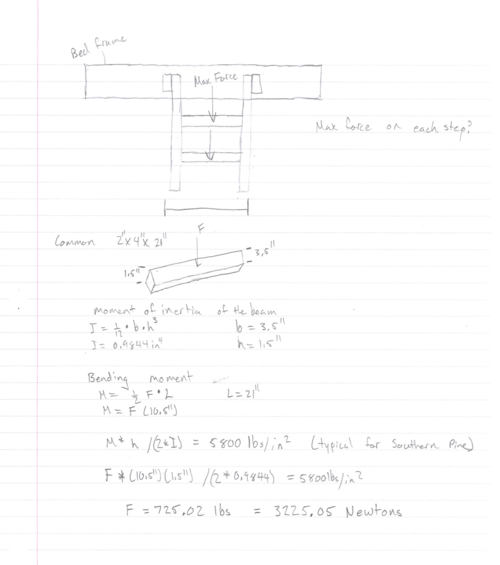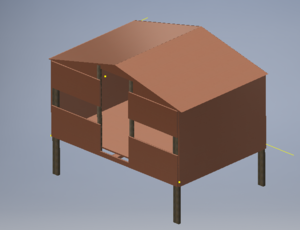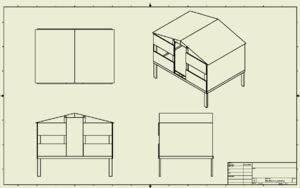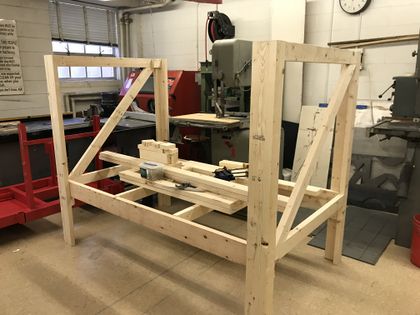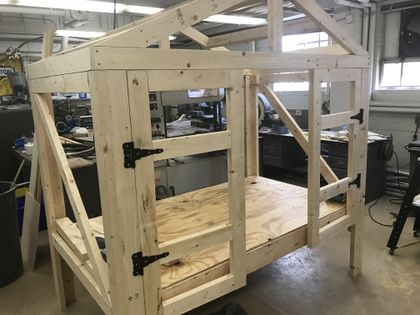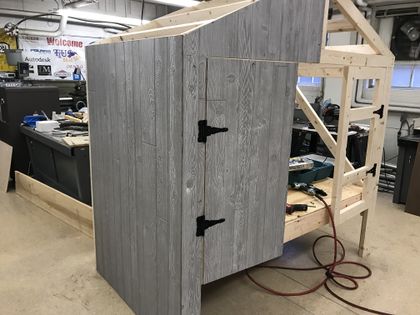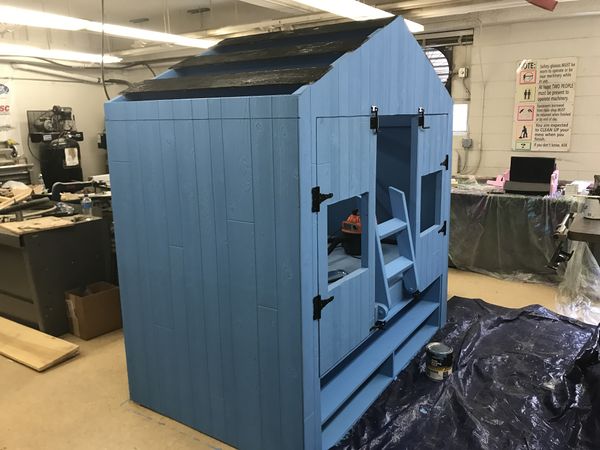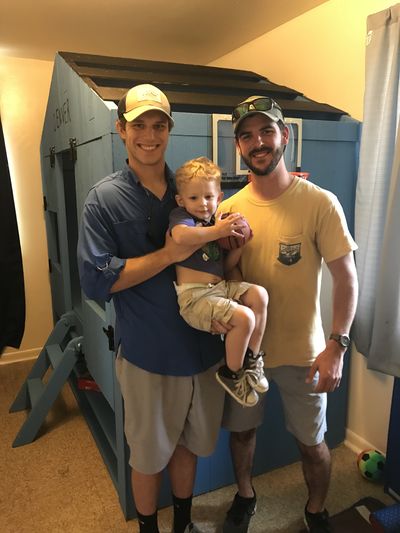Shut eye (sleeping aid for child)
Contents |
Abstract
This project involves a child who faces issues with his sense of touch which correlates with his ability to sleep. He requires a special bed that incorporates different forms of enthusiasm.
Team members
From left to right:
- Garrett McReynolds
- Naveen Chulani
- Todd Jones
- Mark Farr
Problem Statement/overview of the need
The toddler we are partnering with has anxiety about sleeping in his own bed. He is not diagnosed with any disabilities but requires a variety of textures to feel in order to facilitate his sleeping capability. Team Shuteye is tasked with the objective to create a bed with sensory objects, a bed he can be excited about, and an overall safe bed. Extravagant bed frames can be exciting to sleep in but provide little comfort in sensory objects.
Design Specifications
Optional (depends on selected design concept)
- An attachment - railings (aluminum/steel/wood) may need to be included. (Safety feature incorporated into sides of bed's structure)
- The outside structure of the bed may contain a basketball hoop. (1)
Mandatory
- The bed frames will need to be coated with a variety of textures, at least 5-8 types (rough, smooth, soft, hard, lumpy, etc.)
- The bed's infrastructure will need to include a form of storage, at least 2: 3x1 to 4x1 ft. in length (drawers/cupboards), location of storage: foundation of bed.
- Kinematics of the bed should be rigid and should not wobble if forces are introduced.
- Infrastructure of bed should be able to accommodate the child as he ages. (30" ~ 65" in length, 20" ~ 45" in width)
Background research
As we began our research for an interactive sleeping bed for the young child, we decided to try and find a bed with either activities on the outside or something for his sensory disability on the inside. However, the research was not very profitable with luck. We found beds with storage that resembled that of a car or tree house. The main issue, being his sensory disability; we were not able to find what was needed. Some of these beds, seen below can be used and redesigned; although they cost any where from $500-$1200.
Conceptual Design
Summarize your conceptual design process. Develop at least three concepts.
Design Concept 1
In this concept we decided to buy a pre built bed house and modify it to our specification. Modifications include: A safety gate, under-bed storage system, sensory material inside the bed, basketball goal, activity learning game. Estimated Cost-$1150- Breakdown: Bed house $900, Extras $250
Design Concept 2
In this concept it was a build all design. We would have joints where it can be torn down and moved into the house. The additions we would put into the bed would be a disappearing safety rail, a magnetic chalk board wall, and sensory fabrics on the inside of the bed. The estimated cost for the bed was roughly $500.
Design Concept 3
In this concept, it was also a build all design. The feel I was trying to grasp is a cozy cabin. The concept has several options for storage. As you can see, I left one of the side walls without a window to add an activity on the outside but at this time it has no activities on the outside. Sensory additions on the inside such as different textured pillows. The estimated cost is $600
Evaluate concepts/select candidate
Design 1 and Design 2 tied for the best option. In our design process, each member drew their own concept without conferring with other members to enhance our chances of getting three original designs. With that being our goal on developing concepts, our designs have so many different positives to each design. We could not pick just one concept, but will be taking a combination of each.
Evaluation of Design Concepts |
|||
|---|---|---|---|
| ~ | Design #1 | Design #2 | Design #3 |
| Sensory | 1 | 1 | 3 |
| Storage | 3 | 2 | 1 |
| Daytime | 1 | 2 | 3 |
| TOTAL | 5 | 5 | 7 |
Detailed Design
Description of selected design
After we have talked with the family and showed them our designs we have came to a conclusion. We have decided to go with Design Concept 1 with some alterations to the original design. To start off our design, we will be buying a pre-made bed structure. From there, we will be building underneath storage and installing hinges on the side of the bed structure to gain easy access for the mother to tend to the bed. There will also be ladder in front of the door that rise up to form a safety gate so the child will not fall out of the bed. To tend to some of the child's needs, we will also be making a textured pillow to help the child fall asleep. To add some fun to the bed, there will be a basketball goal and a magnetic chalk board attached to one side of the bed.
Analysis
One of the major aspects that will be analyzed is the maximum load that the slats can support without collapsing. The next analysis we are looking at are the hinges. Finally we are looking to see what the stairs can withstand.
Engineering analysis 1
After completing the 3D model, we ran a Stress Analysis Test. The slats simulated in Inventor were developed using oak as the material. Oak was chosen because it had the closest bending strength relative to pine wood, which was the actual material of the infrastructure. Oak being 14100 psi and yellow pine wood being 14500 psi. In doing so, there will be some inaccuracy (5-8%) during the test. According to the diagram below, the maximum weight that was achievable, with very little strain on the slats was 180 lbs. The weight of the mattress was inclusive of this 180 lbs.
Engineering analysis 2
We performed analysis on the hinges while the door is open with the weight of the door. The weight of the door is calculated to be roughly 20 pounds. The hinge placement are at the top and bottom corners of the door. We used the static equilibrium equations to perform our calculations. After we did our math we determined the forces that naturally were
applied on the hinges by the forces of gravity.
The Top Hinge
-Vertical Reaction Force is 10 pounds going up
-Horizontal Reaction Force is 7.45 pounds in Tension
The Bottom Hinge
-Vertical Reaction Force is 10 pounds going up
-Horizontal Reaction Force is 7.45 pounds in Compression
Engineering analysis 3
CAD Drawings
Bill of Materials
| Item | Unit Price | Quantity | Price | Source |
|---|---|---|---|---|
| Bed Structure | $599.99 | 1 | $599.99 | Amazon |
| Hinges | $3.23 | 2 | $6.46 | Lowes |
| Pin and lock | $4.28 | 6 | $25.68 | Lowes |
| Drawer Handle | $3.49 | 1 | $3.49 | Lowes |
| 24" Drawer Slides | $18.99 | 1 | $18.99 | Lowes |
| Magnetic Board | $58.99 | 1 | $58.99 | Amazon |
| Basketball Goal | $19.58 | 1 | $19.58 | Amazon |
| Abc Magnets | $14.89 | 1 | $14.89 | Amazon |
| Pillow | $19.99 | 1 | $19.99 | Wal-Mart |
| Fabric | $5.99 | 2 | $11.98 | Wal-Mart |
| Paint | $19.99 | 1 | $19.99 | Lowes |
| Wood Screws | $24.99 | 1 | $24.99 | Lowes |
| Finishing Nails | $3.47 | 1 | $3.47 | Lowes |
| Carriage Bolts and etc. | $5 | 2 | $10 | Lowes |
| 2x4x10 | $5.89 | 6 | $35.34 | Lowes |
| 1x12x10 | $27.58 | 5 | $137.90 | Lowes |
| 1x2x10 | $10.90 | 2 | $21.80 | Lowes |
| 1/8" plywood | $17.50 | 1 | $17.50 | Lowes |
| Miscellaneous | $50 | 1 | $50 | |
| Grand total | $1101.03 |
Assembly Instructions
The sides, roof, doors, and base have two or three screws per side. Unscrew and take each part off. Assembly: Put one side with the base, then the other side. Screw on doors. Put roof on and screw in. Slide shelving in the bottom and screw in.
Fabrication Process
Testing and implementation
We made sure the bed was sturdy enough, checked all around the bed for sharp points and places where fingers can be pinched. We discussed with the family the danger points, although they are minimal.
Photos of Completed design
Instructions for safe use
Doors open like barn doors. Make sure fingers are not along the base or top of the door. Do not climb on or in between the roof. Do not use the device unless supervised by an adult that has been fully understood the safe use of this product.
Project Summary, Reflection
With this project, we learned a lot about wood working, working with a price point in mind, and working with deadlines. We were able to work with a very special family and they supported us all the way through. We were able to present our project at the EagleWorks competition at TTU. When we presented the finished product, the child was so excited and was playing with the extras on his bed. Mom and the specialist said the bed was beyond what they imagined. We felt honored we were able to take our talents and give back to a child that could benefit from them
